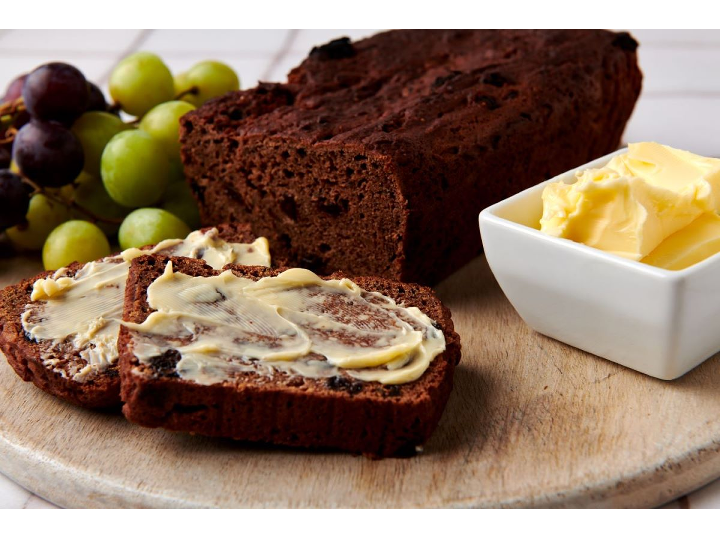
Gluten Free Sourdough Bread
The aim of sour dough is to capture and grow the natural and wild yeasts present in the air and flour. As they grow they produce bubbles of carbon dioxide gas and lactic acid, which will eventually be used to leaven the dough and add flavour. Best to use bottled spring water, but if using tap water it needs to be filtered, boiled and cooled first.
Credited to: Coeliac UK
Kcal: 490.0
Ingredients
To begin (creating the starter):
- 100g (3½oz) gluten free white bread flour*
- 115ml (4fl oz) tepid spring water
- 100g (3½oz) gluten free white bread flour*
- tepid spring water
- 100g (3½oz) sourdough starter
- 250ml (9fl oz) tepid spring water
- 30g (1oz) fast rising yeast
- 30g (1oz) sugar
- 300g (3½oz) gluten free white bread flour*
- 100g (3½oz) sorghum flour
- 3 tsp (15g) xanthan gum
- 2 tsp (10g) salt
- 2 tsp (10ml) egg replacement
- 75ml (3fl oz) olive oil
- 3 egg whites
- 1 tsp (5ml) vinegar
Notes: *Please check our Food and Drink Information for suitable products.
Method
Method for the starter
- Add the flour and water to a small bowl and mix to a thick, sticky paste. Cover with a damp tea towel or muslin and secure with string or elastic band. Leave in a draft free place on a work surface for a few days, re-damping the cloth as necessary
- After 2-4 days the paste should have a skin and look bubbly. It should have a milky smell. At this stage you should give it its first refresher. Add 100g (3½oz) of gluten free white bread flour and enough tepid spring water to make a soft sticky paste. Mix the dough with a spoon (or your hand) to get air into the mixture. Cover as before with a damp cloth and leave for a further 24 hours
- The starter should look very active by now. Stir well and then remove and discard half of it. Add another 100g of flour and enough tepid water to make a dough as before. Cover and leave as before for another day
- At this point, the sourdough starter should look very active and ready to use, if you want to keep some for your next batch you will need to increase the volume. You can do this by adding 100g (3.5oz) of flour and enough tepid spring water to make a sticky dough as before. The dough should be bubbling and ready in 6-8 hours.
Method for the Dough
- Preheat the oven to 200°C/400°F/Gas Mark 6
- Put the starter and the water and yeast and sugar in a bowl and mix to a thin batter
- In a large mixing bowl sieve together the flours, xanthan gum, and salt with the egg replacer
- Add the olive oil, egg whites, and vinegar, and beat for 3 minutes
- Spoon the mix into an oiled pudding basin. Cover with a damp tea towel and place in a warm place so it can prove. Leave for about 25 minutes or until doubled in size
- Bake in the oven for 35-40 minutes or until golden and cooked through. The loaf should sound hollow underneath when tapped. Cool on a wire rack and enjoy within 3 days or freeze for up to a month.



